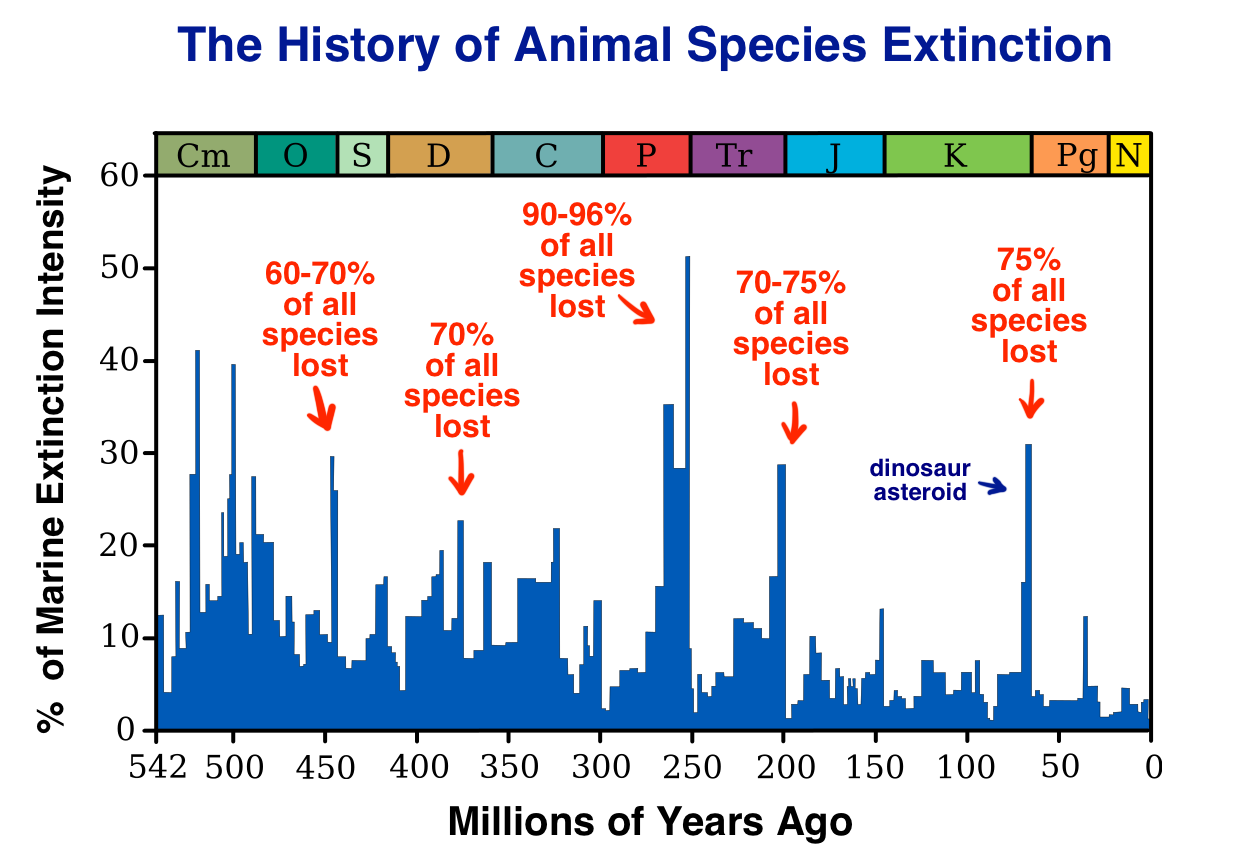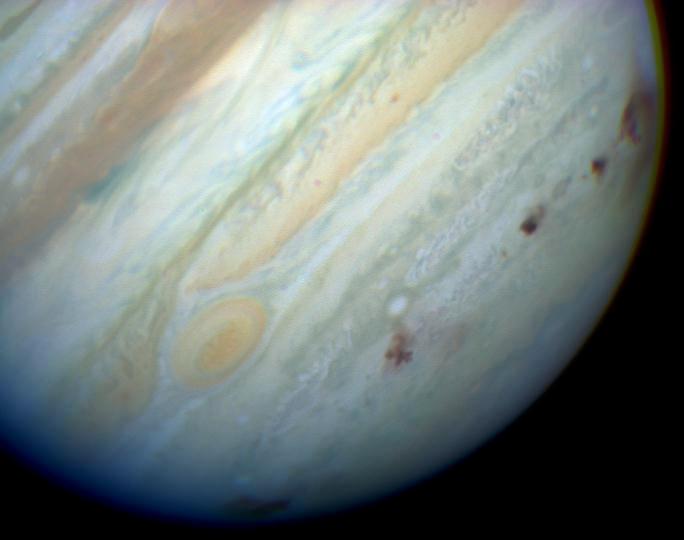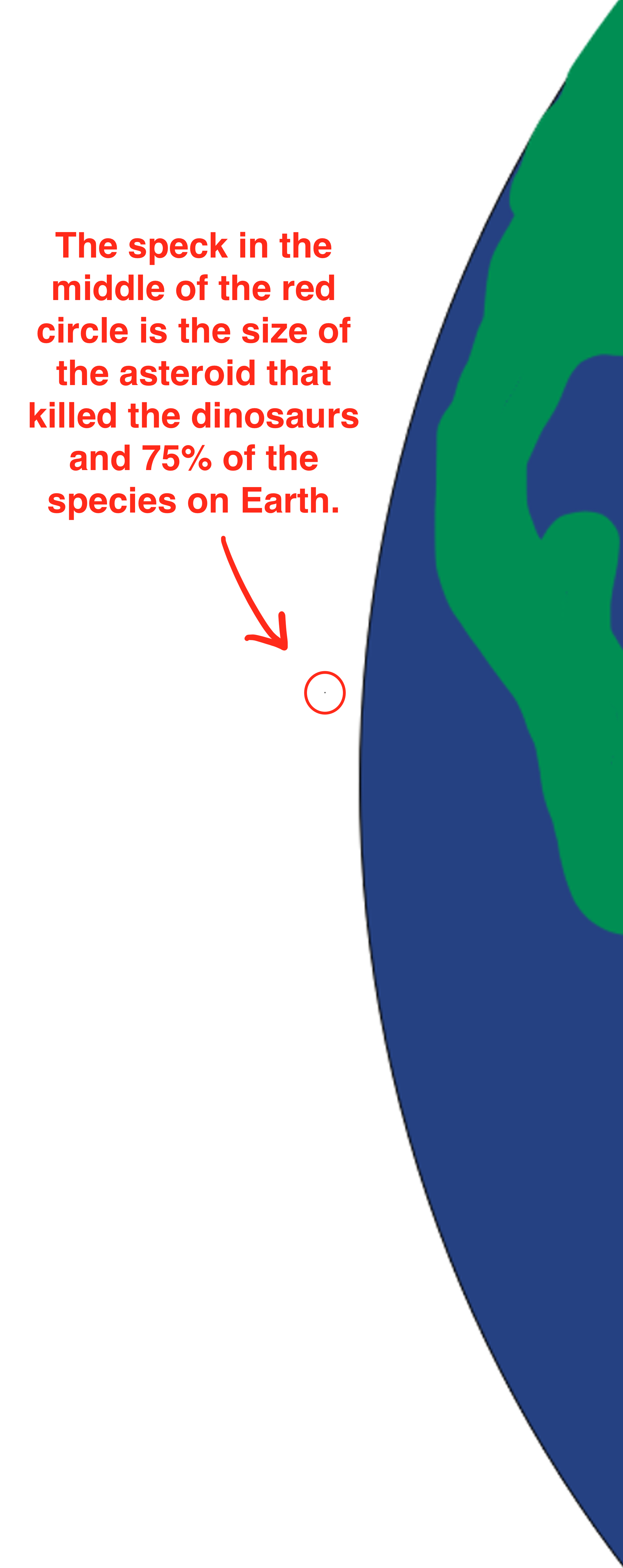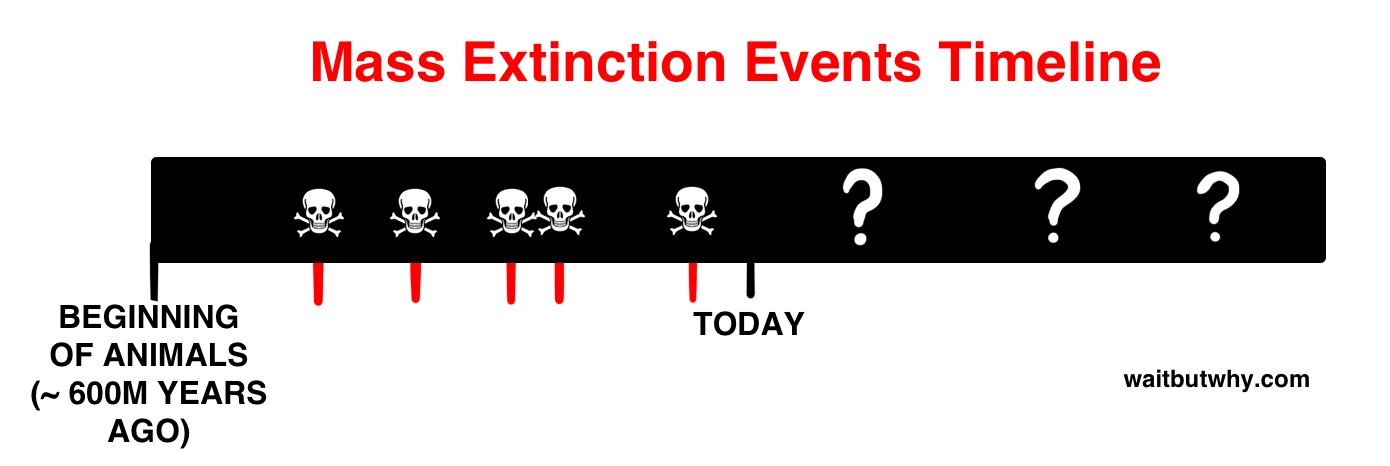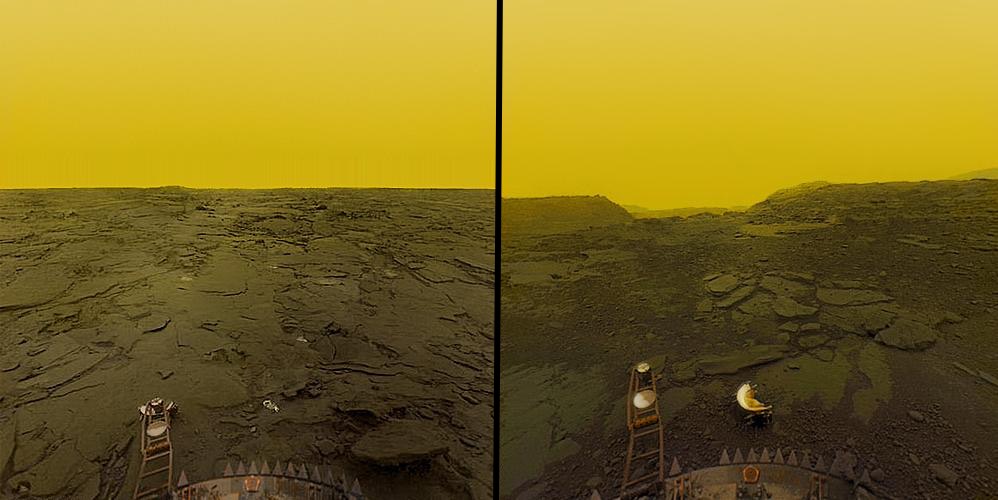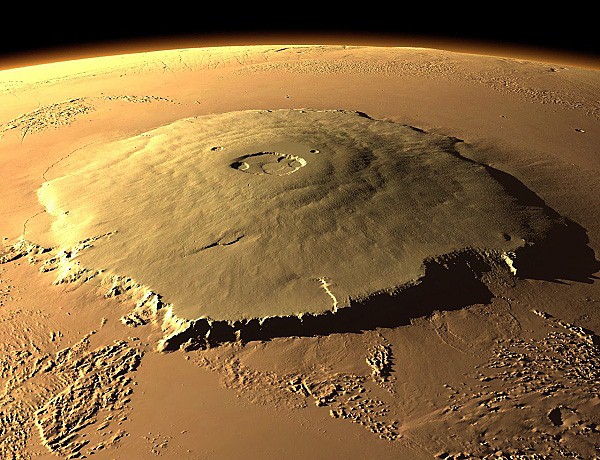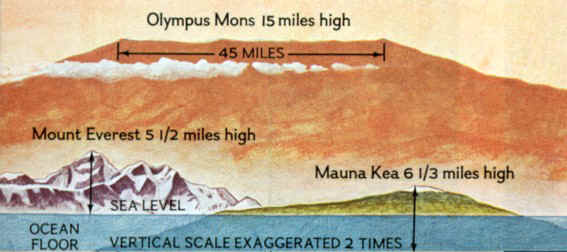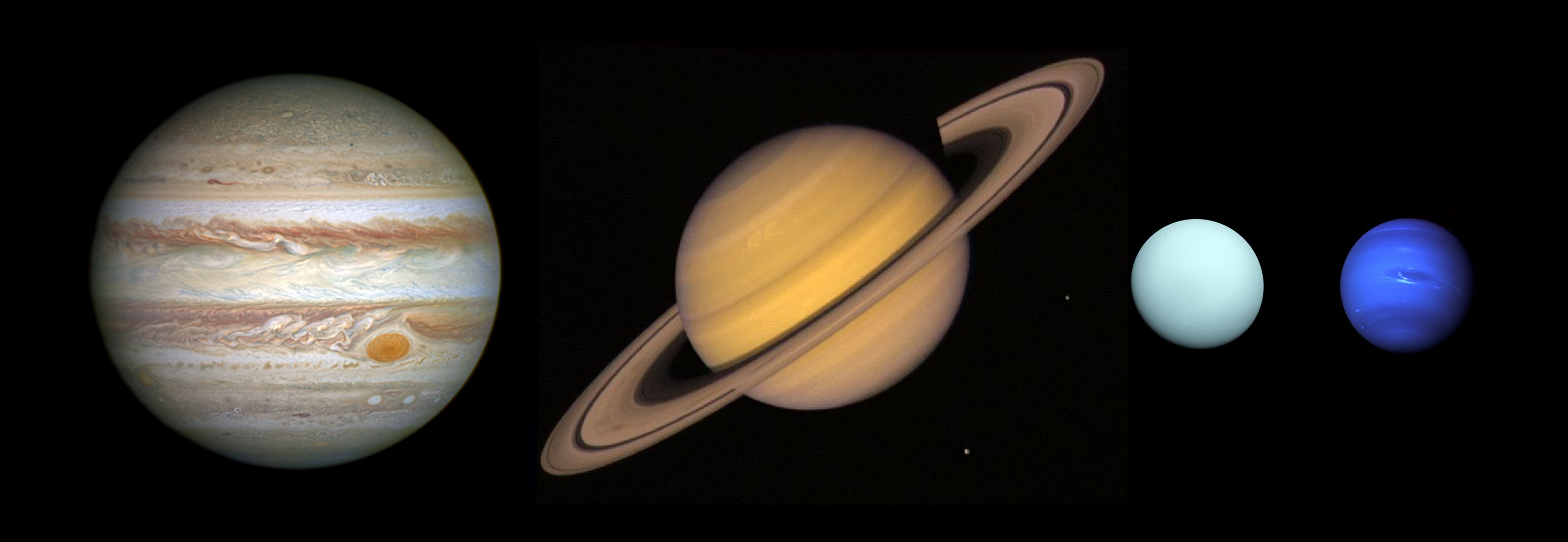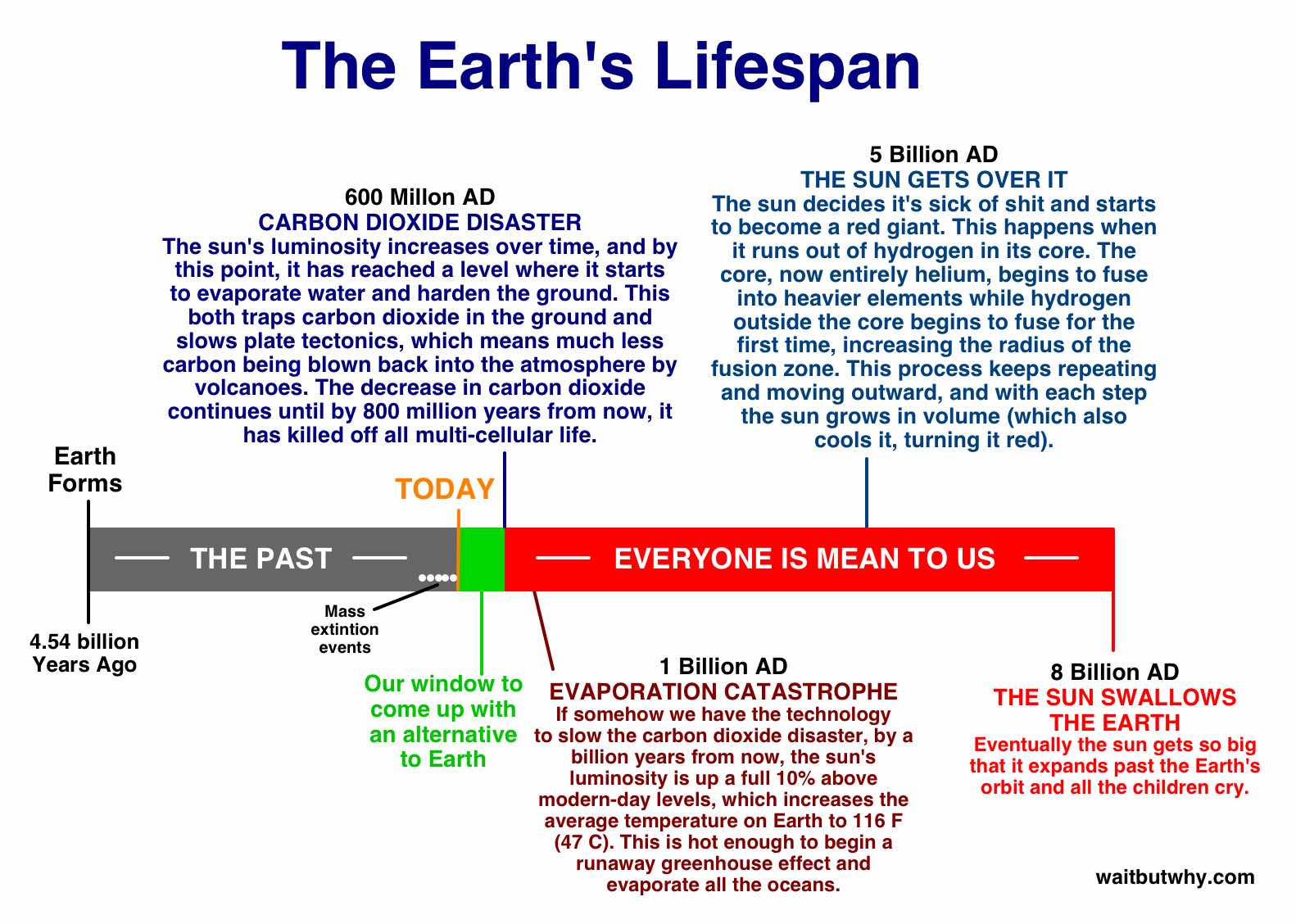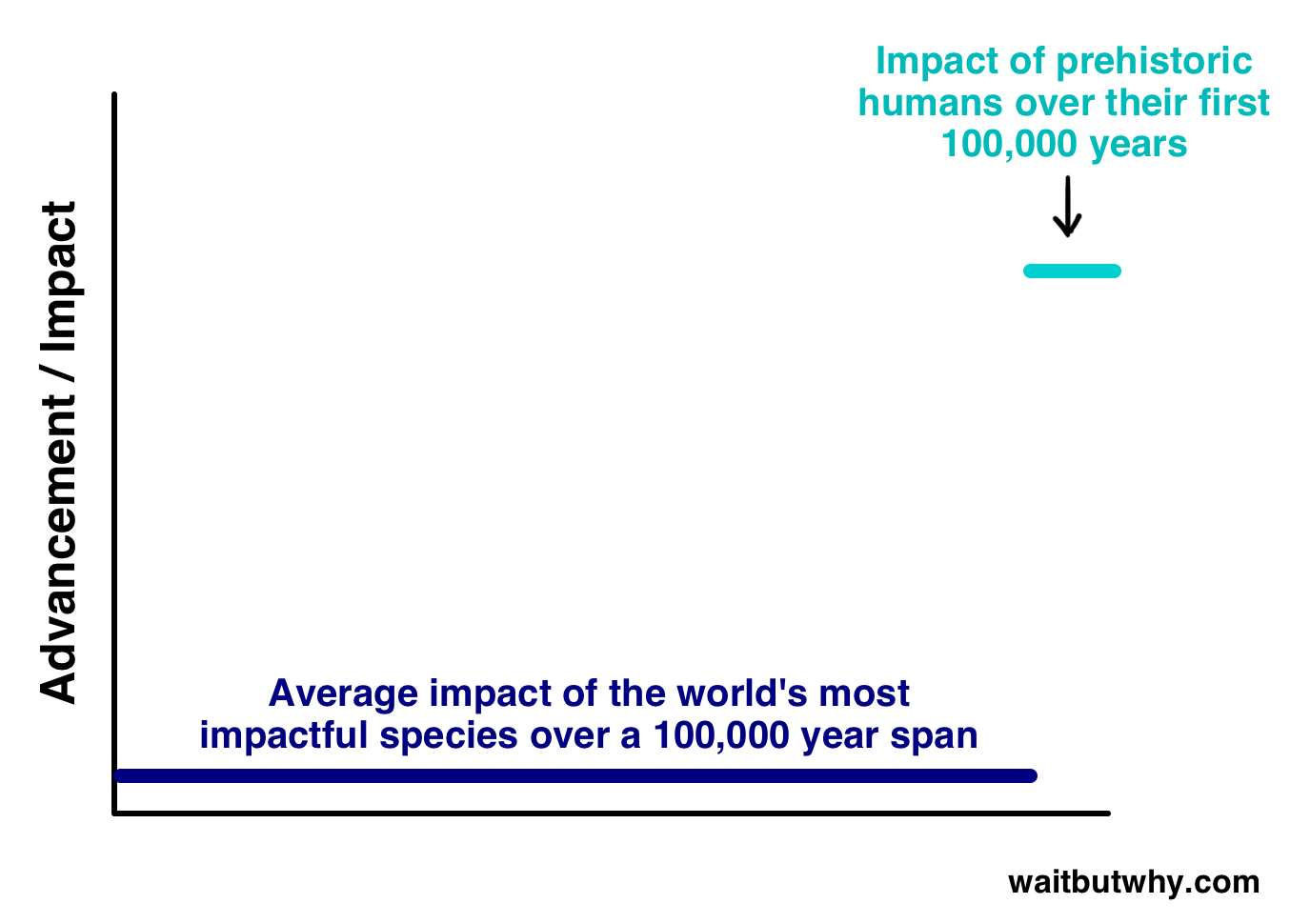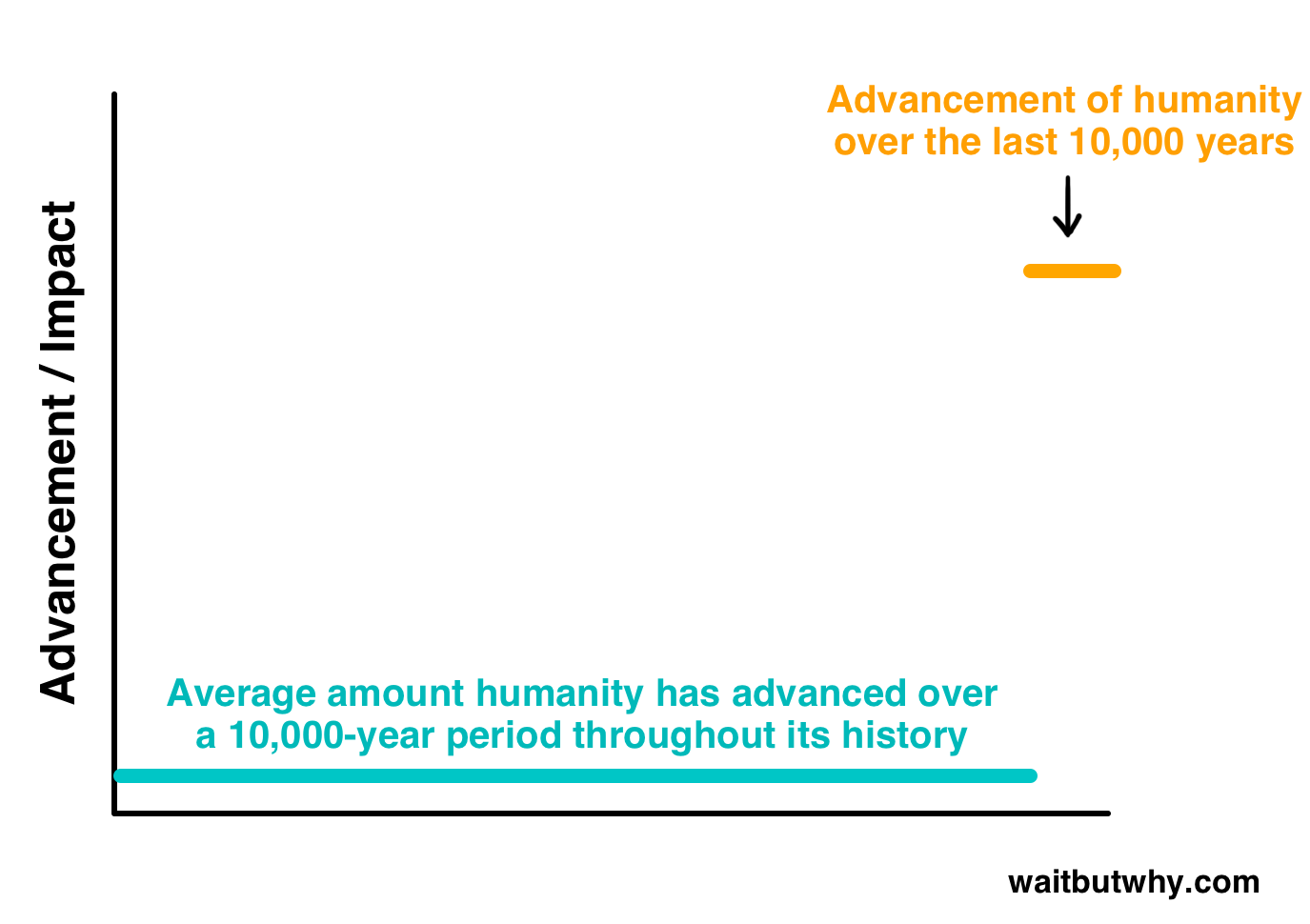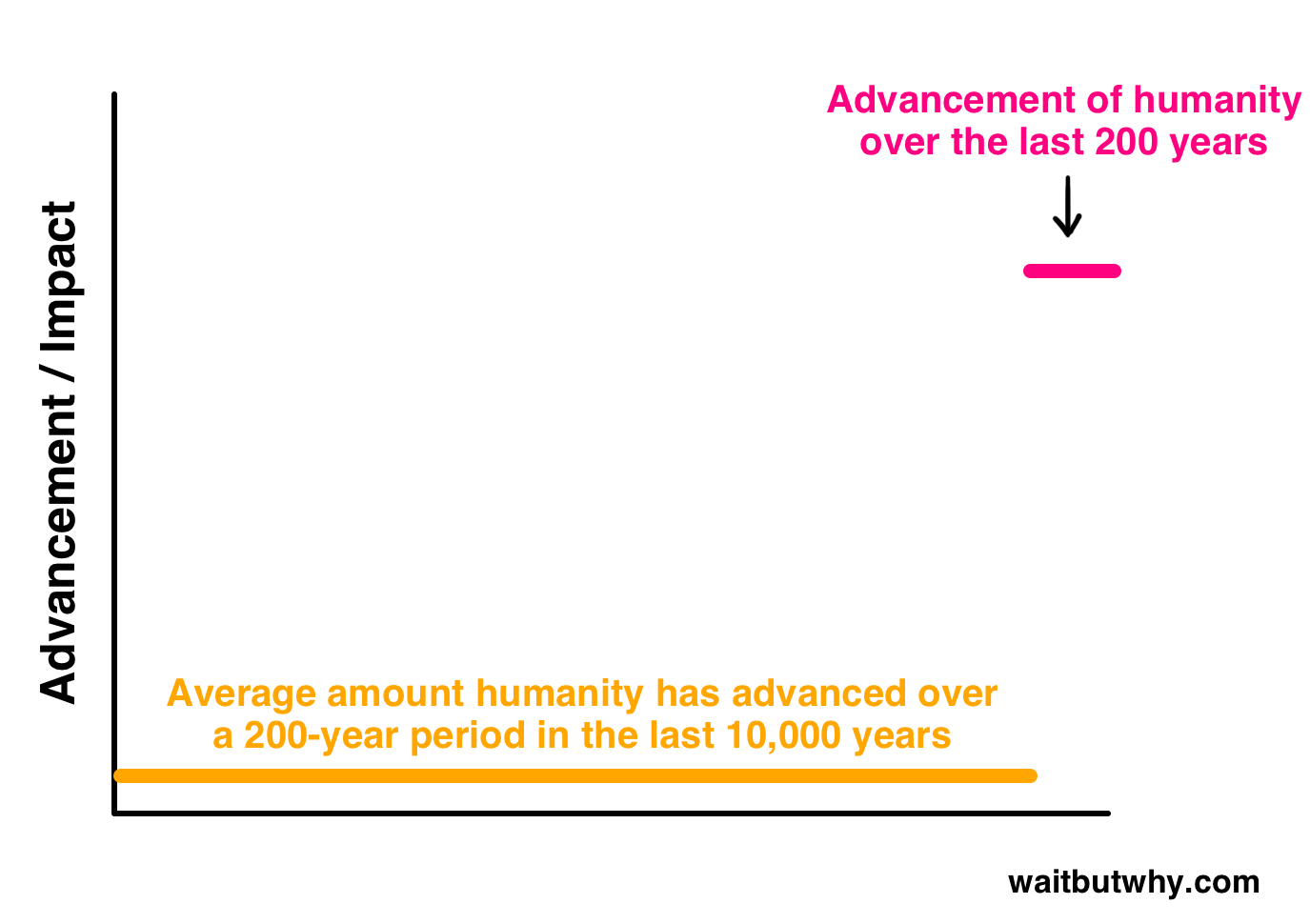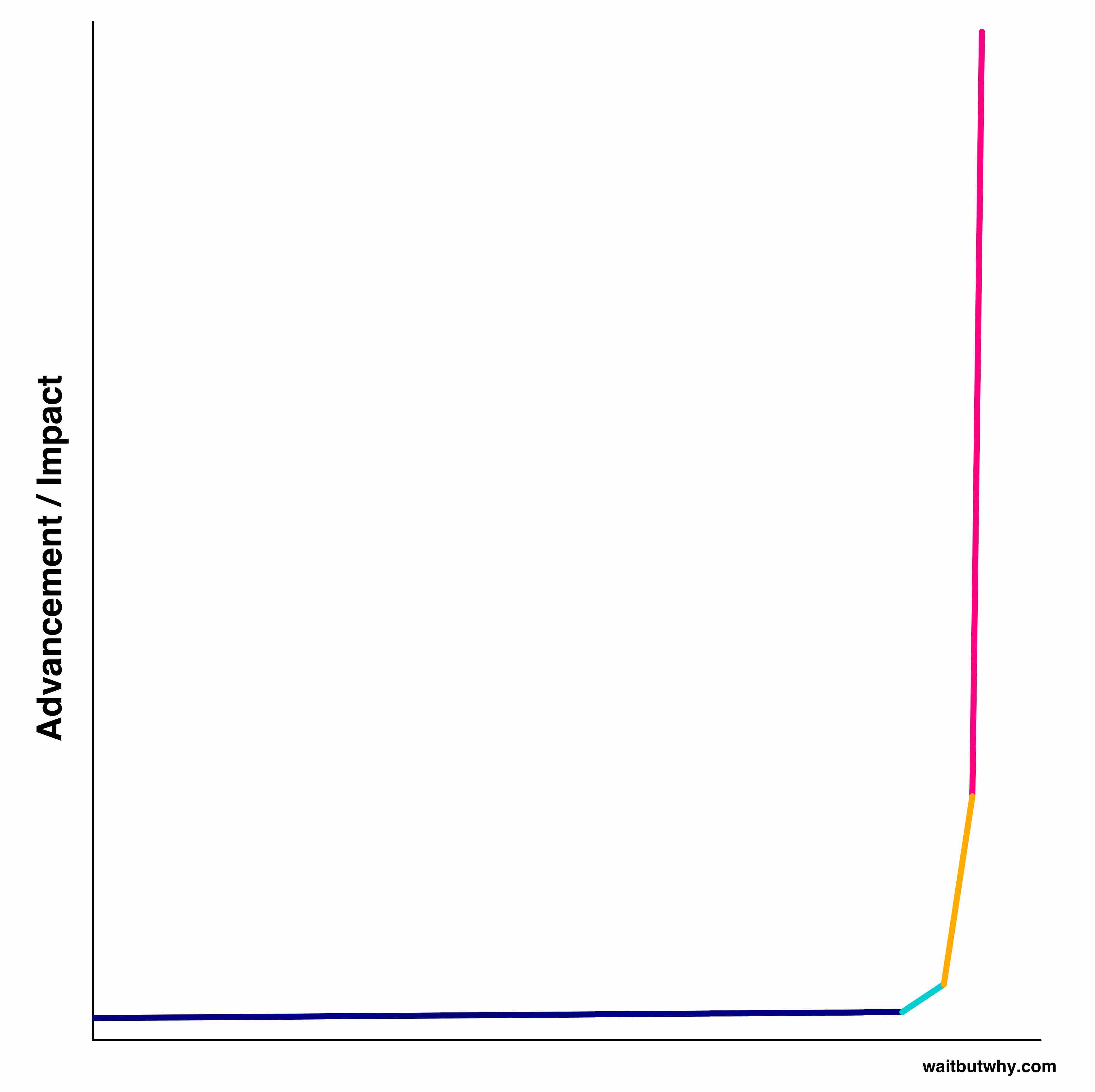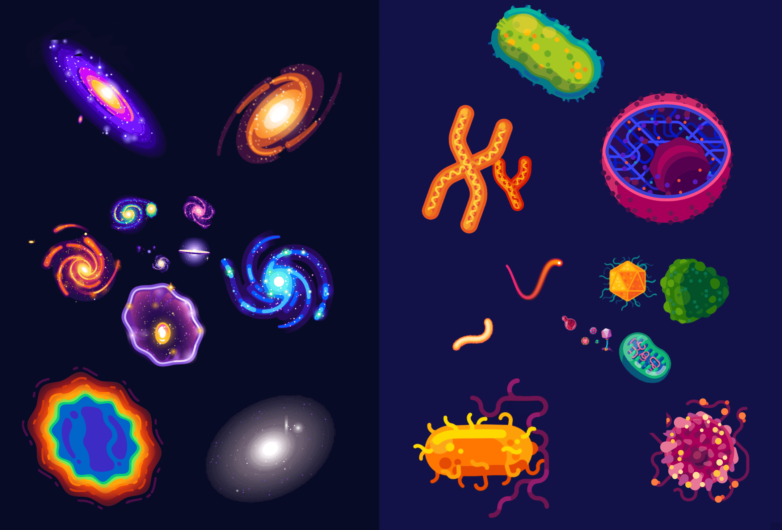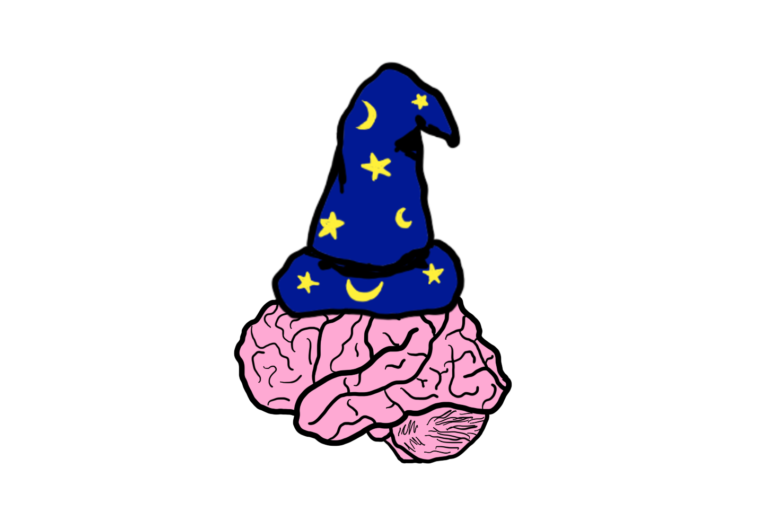Like the rest of us, Elon Musk has a handful of life goals. Unlike the rest of us, one of those life goals is to put 1,000,000 people on Mars.
In the last few months, as I’ve explained to friends what I’m doing with this post series, there’s always that distinct moment when I mention the whole…Mars thing. The facial reaction ranges from “Whattttttt nooooo” to “Oh too bad, up till now I was thinking Elon Musk sounded pretty awesome and didn’t realize he was a silly wacky billionaire” to “Can I laugh or is Tim all serious about this and he’ll be annoyed?”
One reaction I haven’t seen is, “Cool, that makes sense.”
I get it—I felt the same way until pretty recently. Typically a sentence with the word Mars in it is about some esoteric astronomy thing or some geeky science fiction thing. And the word colonization usually comes up in sentences about history. The two words aren’t supposed to go together in the real world.
To explain why Musk wants to put a million people on Mars, I’m going to introduce you to two aliens living on an Earth-like planet on the other side of the Milky Way—Zurple and Quignee:
Zurple and Quignee’s planet, Uvuvuwu, formed 1.2 billion years later than the Earth, but because it only took 300 million years on Uvuvuwu for simple single-cell organisms to evolve into complex single-cell organisms (it took 1.6 billion years on Earth), life on Uvuvuwu beat us to the punch and reached human-level intelligence 11 million years ago. Today, the creatures on Uvuvuwu are far more advanced than anything we could dream of on Earth.
Zurple and Quignee have been friends since meeting in grad school 2.4 million years ago, and one of their favorite activities is observing emerging intelligent life forms throughout the Milky Way and betting on whether they’ll go extinct or “make it through” (they have ways to see all planets in real time because of technological advances we wouldn’t begin to understand).
Recently, Zurple and Quignee have been glued to what’s happening over on planet 143-Snoogie—which is their name for Earth. Their interest in 143-Snoogie began about 350,000 years ago, when Zurple got an alert on his IntelligenceWatch app:
Life on 143-Snoogie has reached fetal intelligence.
He was at lunch with Quignee at the time, and when he mentioned the alert, Quignee said, “I’ll give you 2-1 odds they go extinct.” Zurple shook on it. Why not? It was always fun to have a group of species to keep track of and root for.
But recently, starting about 100 years ago, the two aliens have been paying much closer attention to the life forms on 143-Snoogie, and today, they’re positively riveted by what’s happening on the planet.
To figure out why, let’s think about their bet and what might lead to a victory for one of them. Quignee wants the human race to go extinct. Badly. Zurple wants them to “make it through,” whatever that means. We’ll come back to that.
One thing they’re probably paying attention to is the pattern of extinction events throughout the history of life on 143-Snoogie. Let’s take a look.
The Scary Thing About the Universe
Species extinctions are kind of like human deaths—they’re happening constantly, at a mild and steady rate. But a mass extinction event is, for species, like a war or a sweeping epidemic is for humans—an unusual event that kills off a large chunk of the population in one blow. Humans have never experienced a mass extinction event, and if one happened, there’s a reasonable chance it would end the human race—either because the event itself would kill us (like a collision with a large enough asteroid), or the effects of an event would (like something that decimates the food supply or dramatically changes the temperature or atmospheric composition). The extinction graph below shows animal extinction over time (using marine extinction as an indicator). I’ve labeled the five major extinction events and the percentage of total species lost during each one (not included on this graph is what many believe is becoming a new mass extinction, happening right now, caused by the impact of humans):1
Naturally-occurring extinction events can be caused by a lot of things. The universe is a violent, hostile place and we’re a group of fragile organisms living in a delicate balance of precise conditions. We’re around, for now, because the universe is currently allowing us to be. Some things that might wipe us out:2
- A nearby supernova. Supernovae, the universe’s largest explosions, happen when giant stars die. If one went off within 30 light years of us—which happens about once every 250 million years—it would probably do us in.
- A gamma-ray burst. Gamma-ray bursts are the universe’s brightest events. They occur when a massive star’s core fuses into heavier and heavier elements until it eventually can’t fuse anymore and the star collapses into a black hole, ejecting a two-way burst so ridiculous that it releases as much energy in a few seconds as the sun will over its 10-billion-year lifetime. Gamma-ray bursts are much rarer than supernovae, happening in each galaxy only a few times in a million years, but unlike a supernova (which happen about twice a century in a galaxy like ours3), a gamma-ray burst could badly ruin our day from much farther away, anywhere in our galaxy—if it happened to be pointed in our direction. It’s hypothesized that the first of the five mass extinctions on the chart above may have been caused by a gamma-ray burst.
- A solar super flare. Solar flares happen all the time, and the Earth’s magnetic field typically shields us from them (this is what produces the Northern Lights), but we’ve observed in other sun-like stars the occasional super flare millions of times more powerful than a normal solar flare. A super flare from our sun would suck. Speaking of the Earth’s magnetic field—
- The reversal of the Earth’s magnetic field. This can happen at any time, whenever the Earth’s magnetic field is craving attention—on average it happens about once every half a million years. The reversal itself isn’t the problem—it’s the transition that’s dangerous. While the field is in the process of reversing, there is a stretch of time between 100 and 1,000 years long during which the magnetic field is reduced to about 5% of its normal strength. Since we rely on the magnetic field for protection, this can be devastating for life. Scientists have shown links between magnetic field reversals and mass extinction.
- A rogue black hole. Once in a while, one of these creeps wanders into a solar system uninvited and wreaks havoc. Even without passing close to the Earth, if one passed even as close as a billion miles from us, it would fling the Earth into a more strongly elliptical orbit, turning our summer temperatures up to about 150 F (65 C) and our winter temperatures down to around -50 F (-45 C). Not okay.
- Aliens being dicks. I’ll let late physicist Gerard O’Neill sum it up: “Advanced western civilization has had a destructive effect on all primitive civilizations it has come into contact with, even in those cases where every attempt was made to protect and guard the primitive civilization. I don’t see any reason why the same thing would not happen to us.”4
- A global epidemic. Outbreak without the convenient Hollywood ending.
- An asteroid. Duh. Too much to say for a bullet, so here’s a Blue Box:
Asteroid Impacts Are Unpleasant Blue Box
There are asteroids and comets1 roaming around all parts of the Solar System, ranging from the size of a pebble to the size of a dwarf planet, but most of them are in three places—1) the asteroid belt between the orbits of Mars and Jupiter (which might have congealed into its own planet but never could because of the energy from Jupiter’s nearby gravity), 2) the much larger Kuiper belt surrounding Neptune’s orbit, and 3) the much, much larger Oort Cloud, a huge sphere of objects surrounding the Solar System.
Quick size orientation: If the Solar System is a penny (diameter = 2 cm), with Neptune a little pinprick circling around the edge of the penny (and Earth’s entire orbit so small it just looks like a tiny dot in the center), the asteroid belt is a sharpened pencil-drawn thin circle in the center of the penny with a diameter of about 2 millimeters. The Kuiper belt is a flat circle around the outside of the penny (like Saturn’s rings), drawn as thick as it would be if you painted it with your fingertip. The Oort cloud isn’t a disk like the other two, it’s a sphere, starting about 30 centimeters (1 ft) away from the penny in all directions, but continuing outward for 30 meters (100 ft) in all directions, making it a little bigger than Spaceship Earth.2 While we’re here, the nearest star is 90 meters (295 ft) away from the penny—a little under three times the distance between the penny and the outside of the Oort cloud sphere. So if the Solar System penny is in one endzone of a football field, the nearest star is a pinprick in the other endzone, and Voyager 1, the fastest-moving manmade object, which has been whizzing away from us for 38 straight years, has traveled only 4 cm away from the penny—making it the farthest away manmade object ever. I need to cut myself off and get back to the post, but it’s hard because I’m enjoying the shit out of this paragraph.
Anyway asteroids.
We can be hit by an asteroid or comet (I’ll just use “asteroid” to refer to both for the rest of this) that’s been nudged out of its normal orbit by a collision or some gravitational perturbation (probably caused by either Jupiter or a passing star).
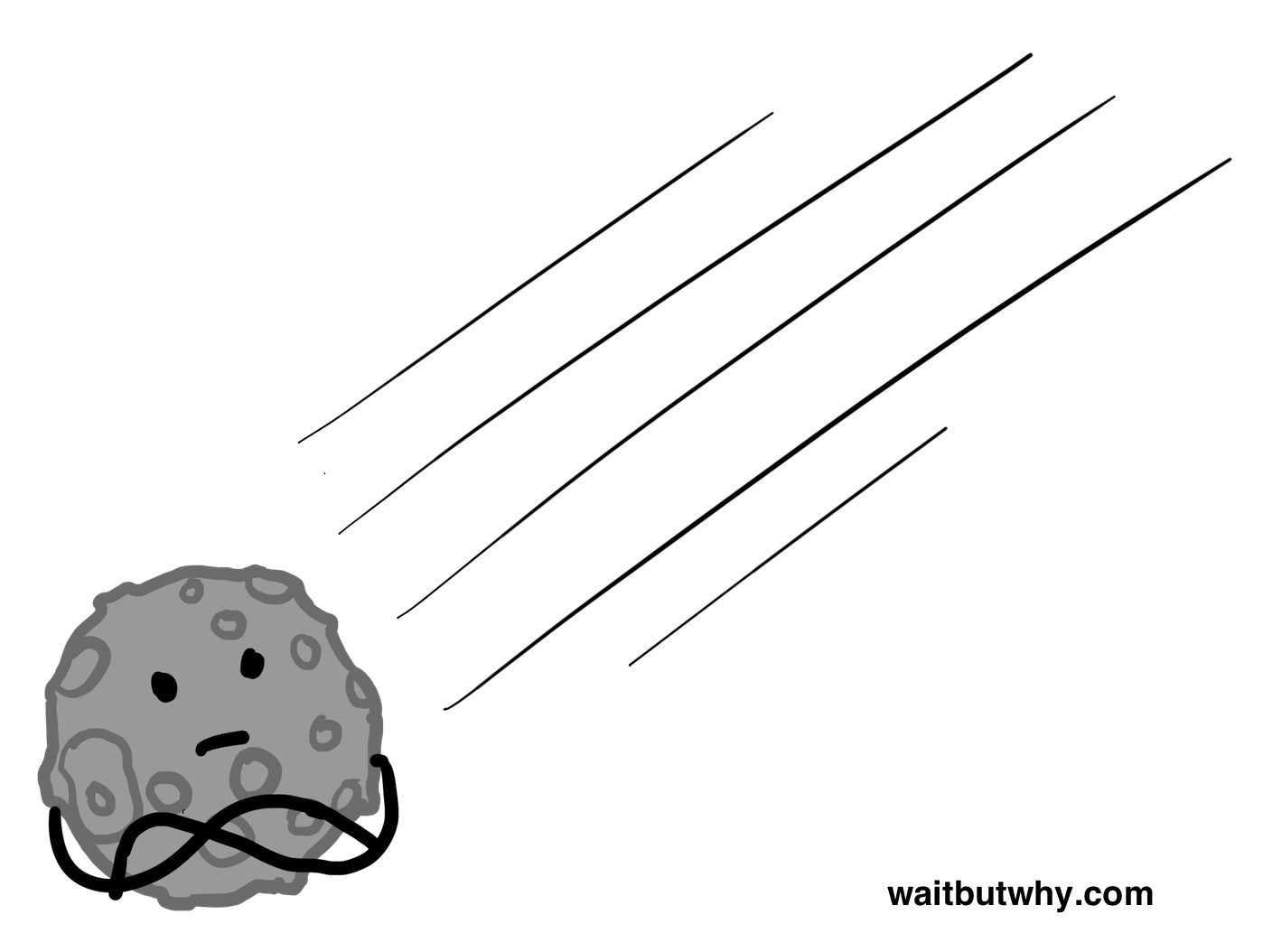 An asteroid doesn’t need to be huge to ruin everything. In 1908, a tiny, 60-meter asteroid exploded in the sky 3-6 mi (5-10 km) over Siberia. Even from way up there, it flattened 80 million trees. If it had made it down to the Earth, it would have exploded with the force of over 1,000 Hiroshima bombs.5 An asteroid with a diameter of only half a mile (.8 km) would kick enough dust up in the air to lower the Earth’s temperature by multiple degrees for multiple years, which would have all kinds of dramatic effects. In 1989 an asteroid about this size passed through the Earth’s orbit, exactly in the spot the Earth had been in six hours earlier. And the effect of an even larger asteroid impact? Well just note that each of these asteroid impact scars on Jupiter is about the size of the Earth:6
An asteroid doesn’t need to be huge to ruin everything. In 1908, a tiny, 60-meter asteroid exploded in the sky 3-6 mi (5-10 km) over Siberia. Even from way up there, it flattened 80 million trees. If it had made it down to the Earth, it would have exploded with the force of over 1,000 Hiroshima bombs.5 An asteroid with a diameter of only half a mile (.8 km) would kick enough dust up in the air to lower the Earth’s temperature by multiple degrees for multiple years, which would have all kinds of dramatic effects. In 1989 an asteroid about this size passed through the Earth’s orbit, exactly in the spot the Earth had been in six hours earlier. And the effect of an even larger asteroid impact? Well just note that each of these asteroid impact scars on Jupiter is about the size of the Earth:6
The famous asteroid that made the dinosaurs sad was about 6 mi (10 km) in diameter. If we’re hit by one of those, we’ll be treated first to a searing wave of heat ten times hotter than the surface of the sun in the area near the impact site as the asteroid, racing down from the sky at 100 times the speed of a bullet, compresses the air beneath it. Then a nearly-instantaneous shockwave will ripple outwards, flattening everything for hundreds of miles in every direction. At that point, with the force of over a billion Hiroshima bombs, the blast will send a thousand cubic kilometers of rock from the asteroid and the impact site splashing upwards into space, creating a wall of black higher than the clouds in front of anyone in that part of the world. When all this rock rains back down through the atmosphere, it’ll turn into thousands of huge fireballs, which will set cities and forests on fire all over the Earth. Soon, the entire Earth will be blazing hot, a chain of earthquakes will be set off, volcanoes all over will erupt, and unthinkably large tsunamis will pummel every coast. This will be followed by a worldwide cloud of dust that’ll rise up and block the sun for months and maybe years, cooling the Earth considerably—and the climate won’t be back to the way it is now for over 1,000 years.
All this from being hit by something that, if the Earth were the size of a three-story mansion, would be the size of a pea.
The Earth itself wouldn’t be too affected by the impact—but the conditions on the Earth’s surface would be hugely affected because of how immensely fragile they are. Here’s a stressful video depicting what I just described.
The extra-scary part is that asteroids are almost invisible in space and very hard to detect. Space agencies and amateur astronomers are tracking some of the potentially-threatening asteroids out there, but in many cases, we wouldn’t know an asteroid was coming until it was billowing down from the sky.3
So even though it seems like we’re on our safe little planet in a silent and still universe, it’s actually more like being in a forest that’s currently calm and peaceful—but where every once in a while, a terrifying bloodthirsty carnivore bursts out of the trees and ravages most of the life here, wiping it from existence. The mass extinction event graph above tells five horror stories from the past when our quiet Earth became the setting for an unspeakable nightmare for everything that lived here at the time. And it’ll happen again—right here, where you sit. The only question is when.
Let’s take a look at the 600 million-year history of animals and the mass extinction events along the way:
Looking at that timeline, we see that while there are definitely bad things looming in the future, the timescales in question are huge, so the probability of a catastrophic existential natural disaster happening in the near future is very low. How low?
To wrap our heads around it, let’s surmise from the past that there’s a good chance of a mass extinction event sometime in the next 50 million years, which means that there’s about a 1 in 50,000 chance there will be one in the next 1,000 years. Proportionally, that’s the same as someone drawing an X on the ground and telling you that it’s likely that lightning will strike that one particular spot sometime in the next month. 1/50,000th of a month is about a minute, so the chances of lightning striking the spot in the next minute is the same as a mass extinction event happening on Earth in the next millennium. In other words, being on Earth over the next 1,000 years should feel as safe as standing in the lightning spot for the next minute, knowing lightning will strike the spot sometime this month.
If a millennium is one minute in the lightning example, a human lifetime is about five seconds. So the question is, how would you feel stepping onto the X for five seconds? I wouldn’t be especially thrilled to spend any time on the X, and those five seconds would probably be a little stressful—but I would also know that I’d almost definitely be fine. That’s the way we should feel living on the Earth during our lives—at least as far as existential natural catastrophes are concerned.
And if you’re just thinking about your own life, or even the lives of the next ten generations of your descendants, being bound to Earth is not a huge deal.
But if you care about humanity as a species, you have to think about things differently. If humans stay confined to Earth as a species forever, it’s the same as a person who plans to stand right on the X for many months. Since the extinction graph above shows us that lightning strikes the X about every two months, that’s not a great long-term plan—right? Maybe our technology can help us survive a few lightning strikes to the face, but it’ll still be horribly unpleasant to go through it, and any single lightning strike has the potential to wipe us out.
Let’s look at it another way. Let’s imagine the Earth is a hard drive, and each species on Earth, including our own, is a Microsoft Excel document on the hard drive filled with trillions of rows of data. Using our shortened timescale, where 50 million years = one month, here’s what we know:
- Right now, it’s August of 2015
- The hard drive (i.e. the Earth) came into existence 7.5 years ago, in early 2008
- A year ago, in August of 2014, the hard drive was loaded up with Excel documents (i.e. the origin of animals). Since then, new Excel docs have been continually created and others have developed an error message and stopped opening (i.e gone extinct).
- Since August 2014, the hard drive has crashed five times—i.e. extinction events—in November 2014, in December 2014, in March 2015, April 2015, and July 2015. Each time the hard drive crashed, it rebooted a few hours later, but after rebooting, about 70% of the Excel docs were no longer there. Except the March 2015 crash, which erased 95% of the documents.
- Now it’s mid-August 2015, and the homo sapiens Excel doc was created about two hours ago.
Now—if you owned a hard drive with an extraordinarily important Excel doc on it, and you knew that the hard drive pretty reliably tended to crash every month or two, with the last crash happening five weeks ago—what’s the very obvious thing you’d do?
You’d copy the document onto a second hard drive.
That’s why Elon Musk wants to put a million people on Mars.
Why a million people? Because that’s Musk’s rough estimate for the minimum number of people it would take to create a completely self-sustaining population. In this case, self-sustaining has a simple definition—it means that if Earth vanished from existence, the Mars population would still be able to survive and thrive and grow. They wouldn’t be dependent upon Earth for anything. Mining needs to be done? The Mars population needs people who know how to construct a mine and miners to do the work. Need to build a new hospital? A rocket launch to fix a broken internet satellite? Expanded agriculture to deal with a food shortage? Emergency measures because a war has broken out? The Mars population alone needs to have all of that covered. Musk doesn’t think 10,000 or 100,000 people will be sufficient—but that a million people should be enough.
This concept—making human life multi-planetary in a self-sustaining way—is often called “planetary redundancy.” Musk calls it life insurance for the species. I call it backing up the hard drive.
Of course, the Mars hard drive is no more reliable than the Earth hard drive. It would be vulnerable to most of the same catastrophes as Earth and it would also crash every month or two. But in most cases, the hard drive crashes would happen at different times. If one crashed really hard and our Excel doc on that drive was lost, the other would still be around—and it would probably have plenty of time to plan a new backup.
So now you’ve put the precious Excel doc on two hard drives. You’d feel much better. But if the doc were important enough to you, you probably wouldn’t be satisfied having it on just two hard drives. You’d want to copy it onto a bunch more hard drives. But what other options do we have? Good time for a blue box:
Which Planets Sound Good to Live On?
Let’s go through them.7
Mercury
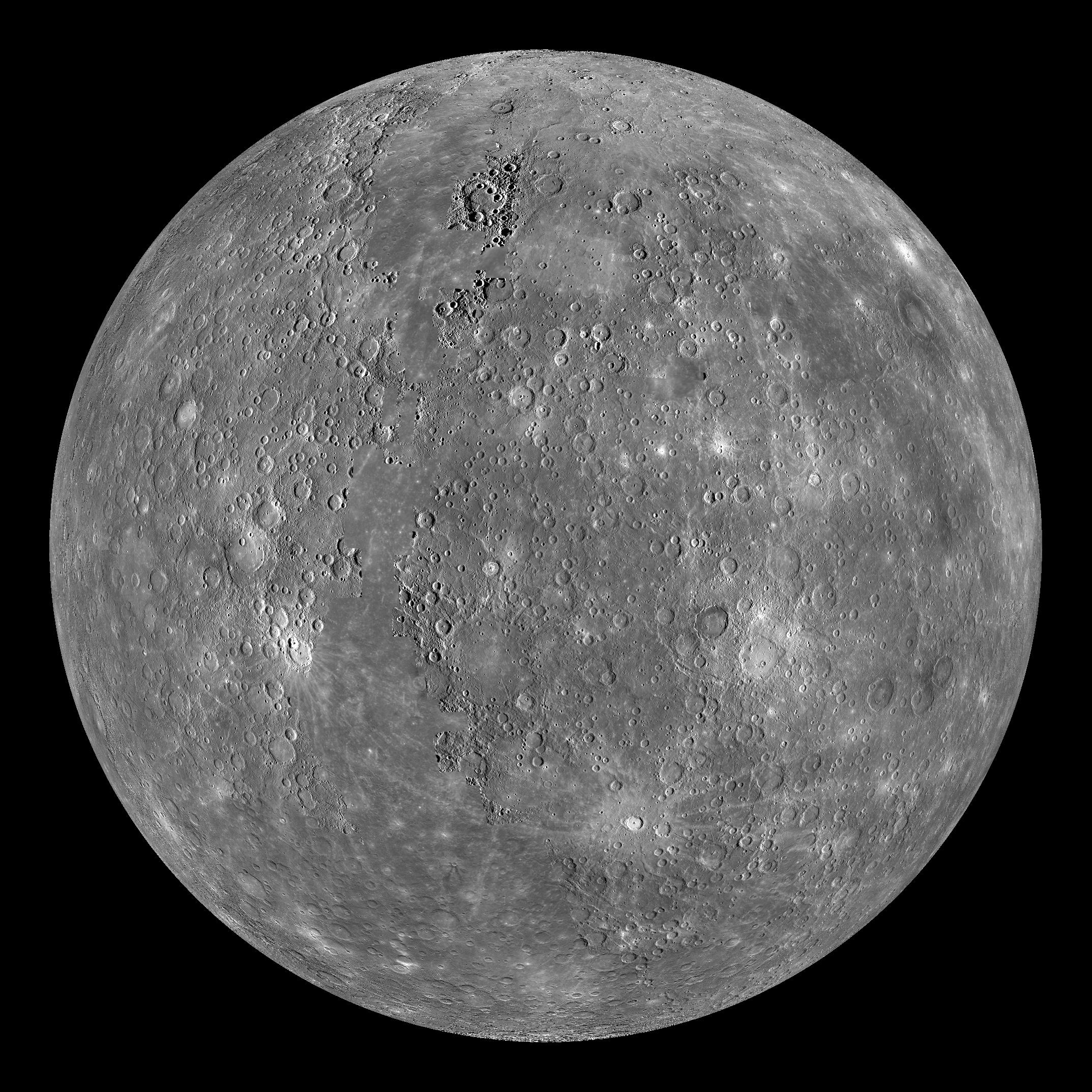 Mercury had the bad luck of being the closest planet to the sun, which is like being seated at a table next to a 450-pound, aggressively horny man. And if you were on Mercury, your day would be spent in 800 F (430 C) weather—so hot that you could put a chunk of lead on the ground and it would melt into a puddle. There’s almost no atmosphere on Mercury, so while you were burning to death, you’d also be standing in a near vacuum, which would rip the air immediately out of your lungs and begin to vaporize the moisture in your skin. The lack of atmosphere would also mean you’d be badly poisoned by radiation from the sun (which would look 2.5 times bigger in the sky than it does on Earth). On the plus side, Mercury’s gravity is only 38% of Earth’s, so you could jump around in a silly way as you died instantly. At this point, you’d be highly anxious for nighttime to arrive, and you’d be unhappy to learn that a Mercury day/night cycle is 58 Earth days long.
Mercury had the bad luck of being the closest planet to the sun, which is like being seated at a table next to a 450-pound, aggressively horny man. And if you were on Mercury, your day would be spent in 800 F (430 C) weather—so hot that you could put a chunk of lead on the ground and it would melt into a puddle. There’s almost no atmosphere on Mercury, so while you were burning to death, you’d also be standing in a near vacuum, which would rip the air immediately out of your lungs and begin to vaporize the moisture in your skin. The lack of atmosphere would also mean you’d be badly poisoned by radiation from the sun (which would look 2.5 times bigger in the sky than it does on Earth). On the plus side, Mercury’s gravity is only 38% of Earth’s, so you could jump around in a silly way as you died instantly. At this point, you’d be highly anxious for nighttime to arrive, and you’d be unhappy to learn that a Mercury day/night cycle is 58 Earth days long.
A month later, when night finally arrived, you’d be in the best mood ever for a minute before you realized that now it’s -280 F (-170 C), which is 152º F colder than the coldest recorded temperature in Earth’s history (Vostok Station, Antarctica). This is because there’s no atmosphere to trap any of the sun’s heat or distribute it around the planet. You’d also still inconveniently be standing in a vacuum. You’d have to spend a whole month deeply frozen to death before you could finally burn to death again upon sunrise.
Your best bet on Mercury would be near the poles which, while freezing and eternally dark, at least have ice on them so you could keep hydrated. In theory, a human base could be built near there, but the upside would be small.
When I asked Musk about Mercury, he called it a “hellhole,” which abruptly ended the conversation.
Venus
 Venus, not to be outdone in dickishness, manages to make living on Mercury sound like sitting on the beach in Maui eating a grilled shrimp.
Venus, not to be outdone in dickishness, manages to make living on Mercury sound like sitting on the beach in Maui eating a grilled shrimp.
It turns out that a vacuum is a lovely place to be compared to the exact opposite situation Venus has going—an incredibly dense atmosphere. Here’s how a Venus visit would go:
First, the air is 96% CO2 and poison to breathe.
Second, who cares about the air’s breathability when you’d be immediately flattened by the atmosphere, which would weigh down on you with more than 90 times the Earth’s surface air pressure. The pressure would be the same as you’d feel if you were 1 km under the ocean—three times deeper than the scuba diving record depth. If you somehow could stay upright, the air resistance would be so strong that moving your arm would feel like moving it through water.
Third, who cares about either the first and second thing because it’s 870 degrees Fahrenheit (465 C). Imagine heating up an oven so blazingly hot that it melts lead, then heating it up another 138 degrees—and then making that the temperature of the entire planet. At night (which again takes a while—Venus’s day is longer than its year4), Venus’s temperature stays exactly the same because the thick atmosphere traps the heat inside.
During the day, you’d experience all of this in dim light, under a reddish-orange cloud cover. The sun would only be seen as a hazy, brighter, yellower part of the sky. At night, you’d live in utter starless blackness—all while being flattened in a sizzling furnace. At least there wouldn’t be any bugs.
Given everything I just said, I’m super impressed with the badass lander of Soviet probe Venera 13 that descended all the way to the surface of Venus in 1982 and managed to stay alive for 127 minutes—long enough to snap these two photos, the only images we have of Venus’s surface:
Wind is one problem you don’t have on Venus’s surface, where you’d only feel a light breeze—but as you ascended up through the atmosphere, that would quickly change. The upper atmosphere of Venus is a new kind of hell—constant winds double the speed of our most powerful hurricanes, and droplets of sulfuric acid (the same acid used to unclog drains) everywhere, whizzing into your face. Typical Venus.
Curiously, though, if you got all the way to the top of Venus’s miserable atmosphere, you’d be rewarded with—shockingly—pleasant, livable conditions. Randomly, at the top of Venus’s clouds is a layer where the temperature and pressure are similar to those on Earth, and because oxygen and nitrogen both rise in Venus’s dense atmosphere (like helium does on Earth), the air in that layer might actually be close to breathable. That’s led some scientists to actually discuss human colonization of Venus’s high atmosphere, building “cities designed to float at about fifty kilometer altitude in the atmosphere of Venus.”8
When I asked Musk about Venus, I was surprised to hear him actually suggest that the planet could be made livable “with extreme difficulty.” He says that way down the road, with advanced enough technology, there could be ways to clear out most of Venus’s atmosphere and possibly make it a far-future option for colonization.5
Mars
 If Mars were a place on Earth, no one would ever want to go there. But in a discussion of inhabiting non-Earth planets, all of which are a total nightmare to live on, the prospect of moving to Mars sounds oddly okay.
If Mars were a place on Earth, no one would ever want to go there. But in a discussion of inhabiting non-Earth planets, all of which are a total nightmare to live on, the prospect of moving to Mars sounds oddly okay.
Mars is basically a colder Antarctica that looks like the Arizona desert with air you can’t breathe and a sun that radiates you to death if you’re exposed to it for long. Every part of Mars is dramatically less livable than the least livable place on Earth. But the conditions are reasonable enough that with a man-made “hab” to live in, a little greenhouse garden, and a good enough spacesuit, you could actually exist on Mars without dying. There’s even water on Mars—lots of it—tied up in ice on the poles, and if you’re in the right part of the planet at the right time of year, you can enjoy glorious 70 F (21 C) weather. Or you can at least know that it’s nice out while you’re looking out the window of the hab.
A Mars day (a “sol”) is about 24.5 hours, which would work nicely for both humans and plants. And with 38% the gravity of Earth, you could kind of function normally. There would be some fun low-gravity perks, like being able to dunk on a 15-ft hoop or living on the second story of an apartment building and leaving for work in the morning by jumping out the window (roughly 1/3 the gravity means that whatever jumping from an X-foot ledge would feel like on Earth would equal the impact of jumping from a 3X-foot ledge on Mars.)
The coolest tourist attraction in the Solar System is also on Mars—the Solar System’s tallest mountain, Olympus Mons:9
Which would cover Arizona and makes Everest look like a foothill:10
Not to mention Mars’ canyon that makes the Grand Canyon look like a paper cut:11
We’ll get into this more later, but in theory, with enough effort and technology, humans could terraform Mars and sometime down the road have a somewhat pleasant planet to live on, with trees and oceans and no need to wear a spacesuit outside.
Relative Planet Distances Bluer Box
We’re about to head much farther away from the sun, so let’s put these distances in context. To do that, you can divide the Solar System into three roughly equal thirds, each about 1 billion miles, or 10 AU long (an AU is the distance from the sun to the Earth):
1st third: Sun to Saturn
2nd third: Saturn to Uranus
3rd third: Uranus to Neptune6
So if the Solar System is a yard long, Saturn, Uranus, and Neptune lie at the end of each of the three feet. Jupiter is 6 inches (about 5 AU) from the sun, cutting the first third in half, and the other four are all crunched into the first two inches of the first foot:
Jupiter and Saturn and Uranus and Neptune
I hope you’ve enjoyed floors, because none of the other planets have one. Here’s how the four faraway planets ended up being so weird:
4.6 billion years ago, there was a huge cloud of gas existing in space when some perturbation triggered the process of it condensing on itself. The universe’s matter knows full well what that means—it’s suddenly Black Friday and it’s a frantic race to scoop up as much of the matter as possible. As every star and planet will tell you, the key is to get the lead early. If you start off with the most mass, you’ll have an easier time collecting more and becoming even bigger, further increasing your advantage. Once there’s a clear early leader, they’re hard to catch.
The eventual winner gets to become a star—everyone else will end up as gawking paparazzi planets revolving around the star for 10 billion years until finally the star becomes washed up and retires and then a new game starts.
In the case of our Solar System, the sun pulled out the victory, scooping up about 99.8% of the gas cloud’s total matter in the process. At that point, it becomes a bloody battle over the remaining scraps. Those who can gather enough will at least have the dignity of being a planet. Those who try and fail will end up suffering the shame of spending 10 billion years as a planet’s paparazzi—a lowly moon.
The hapless matter who manages to fail to become a star, planet, or a moon will be doomed to become either an asteroid—the Solar System’s homeless man—or be absorbed into a larger body and lose their identity altogether. It’s a tough world out there.
During this rat race, an awkward thing can happen. Sometimes there’s certain matter not experienced enough to know the golden rule of solar system formation—know when you’re beat. Mercury, Venus, Earth, and Mars clearly read the signs early, could see that the sun had too big a lead, hung up the acting career and moved on. They switched gears and started working on becoming a planet.
The four gas giants,7 on the other hand, continued on in vain, collecting gas in a sad and desperate attempt to turn the tables. And when you do that, you end up in a bad situation—as a bizarre “almost-but-not-quite-star.” Jupiter’s composition is hydrogen and helium, just like the sun, but unlike the sun, Jupiter doesn’t have enough mass to ignite fusion, only enough to forever remind everyone of its failed attempt at stardom.
The gas giants won’t admit it, of course. Once it became entirely clear that they would not become stars, all four of them quickly changed their tune, pretending they had been trying to become planets all along. Now they’re left in a depressing no-man’s land between star and normal planet and will spend 10 billion years as bloated planets with no surface. No one wants to be a planet with no surface.
We’re not sure exactly what goes on inside of a gas giant like Jupiter.8 If you tried to go find out, you’d zoom down through the outer clouds as the strong gravity (2.5x Earth’s gravity) pulled you in faster and faster. As you fell, things would get darker, hotter, and the pressure would grow higher and higher. Eventually, you’d be in the pitch black, the temperature would exceed the temperature of the sun’s surface, and with a massive amount of atmosphere above you, the gas around you would be so pressurized that you wouldn’t be able to distinguish it from a liquid (this is called a “supercritical” state).9 The hydrogen would then become so condensed that electrons would begin to flow from atom to atom, turning it into a liquidy sea of electricity-conducting metallic hydrogen. Whether at the very center of Jupiter you arrive at a solid core is up for debate.
What’s not up for debate is that humans will never move to Jupiter. Or Saturn. Or Uranus. Or Neptune.
Where humans could possibly move to are the large, rocky, ice-covered moons around Jupiter and Saturn. But it wouldn’t be warm. We could maybe move to our own moon, but it’s just a milder version of the Mercury situation—daytime temperatures that can boil water into gas, nighttime temperatures that can condense oxygen into liquid, and no protection from the sun’s radiation. And the 28-day rotational cycle means plants need to endure two weeks at a time in the dark—not easy.
When I asked Musk about where other than Mars humans could potentially move to, he said there were a handful of places that could work if our technology becomes advanced enough—several moons, a few of the largest asteroids, even Mercury and Venus if you really want to get crazy, but he finished by saying, “I mean, Mars is by far the best option.”
Before we go back to the non-blue world of the normal post, can we just acknowledge how good living on Earth sounds right now?? Imagine the privilege of living in room temperature weather, one atmosphere of pressure, g gravity, light breezes, watery rainstorms, plentiful liquid oceans, magnetic and atmospheric protection from the sun, food everywhere, and air you can just breathe in. You need a huge number of different conditions to be precisely correct in order for you to be able to just stroll around outdoors without a spacesuit. So let’s all appreciate the luxury of living on Earth for the next seven minutes until we all simultaneously forget to give a shit about it again forever.
Let’s reorient. So far, we’ve established:
- Backing up the humanity hard drive is a critical and necessary thing to do at some point—by having all of our eggs in one planet basket, we’re leaving ourselves vulnerable to extinction.
- Mars is by far the best place to back up the humanity hard drive.
- But with enough technology, we could create many more backups by colonizing as many as ten or more moons, asteroids, and planets in the Solar System.
One other fun option: Scientists have explored a bunch of ideas for fun-seeming artificially-constructed space habitats. While the existing ideas are limited by our current imaginations, I can envision a future when living on planets seems as primitive to future people as prehistoric people living in caves seems to us today. In the last few thousand years, humans invented the concept of being “inside,” and now almost all people think of home as somewhere indoors—maybe in the future, a giant, artificial space habitat that has mountains and rivers and trees and millions of people will be the equivalent of the invention of “inside” as it applies to an entire world. And the thought of worrying about weather and earthquakes and being hit by asteroids will seem like cavemen worrying about being attacked by a pack of wolves while you sleep. Maybe.
Either way—once there are millions of humans on several different bodies or habitats, the Excel doc is pretty secure, and humanity should be able to survive nature for a long, long time.
Oh But Also
Of course, all of these hard drives are still housed in the same Solar System, and if all of your backups are in the same house, it’s problematic if that house burns down. And just like we’re unfortunately using a hard drive that’s destined to crash, we’re also living in a house that’s certain to one day burn down. The sun is about halfway done with its life. Here’s the script of Act II:12
After terrorizing the Earth, the sun will move outwards and, one by one, make each of our other potential homes unlivable. Luckily, we have the green window, which gives us a chance to do something about it. Musk points out that we’re currently about 90% of the way from the beginning of the Earth to the point where the oceans evaporate, the heat becomes unlivable, and all complex life dies off—”so if intelligent life had taken only 10% longer to develop, it would never have developed.”10 When it comes to our evolution, we arrived in the ninth inning, just in the nick of time—and now we have to figure out how to expand beyond the planet, and eventually the Solar System, before we’re swept back into eternal non-existence.
A piece of good news in all this is that the timescales here are huge. The sun’s bad behavior doesn’t start for an insanely long time, and I’m assuming that if we make it all the way to the end of the green window, our technology by that point will enable us to either A) easily move around to safe parts of the Solar System as needed, B) become a multi-solar species that can spread out to other life-friendly solar systems in the galaxy, and/or C) create safe space habitats that make energy without the need for stars—either through nuclear technology or, much more likely, some advanced technique we can’t conceive of.
So our to-do list is:
1) Get ourselves Earth-proof (by going multi-planetary) before something extincts us on Earth. Which will give us plenty of time to:
2) Get ourselves Solar System-proof before the sun ruins the Solar System.
And when it comes to Item 1, yes, the next mass extinction event could happen anytime, but if we take the next few thousand years to figure out how to expand beyond Earth, odds are we’ll be able to back ourselves up before anything too catastrophic happens.
So that seems reasonably under control—but back to Zurple and Quignee. If we’re still thousands, and likely millions, of years away from any kind of dire event—why are the two of them so riveted watching what’s happening here on 143-Snoogie right now?
The Scary Thing About Humans
In order to emphasize the utter magnitude of what becoming a multiplanetary civilization would mean, Musk often talks about how zooming out on history exposes all events for their true significance. The further you zoom out, the “bigger” a turn of events has to be in order to remain significant on that scale.
You can play the zoom-out game with the physical world. From where you’re sitting, streets, houses, and cars are significant objects. But from an airplane, they all melt away, and only larger things like cities, lakes, and mountains can hold up. From the ISS, only continents and oceans are significant. Farther away, only planets and stars. Farther still, only entire galaxies.
The same concept applies when you zoom out on the history of life (which we did once, in this post). To make the daily news, an event can be the latest in some scandal, the movement of financial markets, a robbery, a protest, a sporting event, a meeting of two politicians. Those events are fairly small, but so are the holes on the “significance filter.”
When we zoom out to the span of a year, it’s like going from the ground to an airplane—we’re too far away to see most of each day’s newsworthy events anymore and most of them blend into the background. From that distance, only the year’s most impactful events are visible, and the larger overarching storylines that may have been hard to grasp up close begin to take clearer shape—a heinous terrorist attack, a big election, a new product or service that sweeps the world.
Looking at a whole century is like seeing the planet from the ISS. The big stories of the century are like the continents and oceans that can’t be fully seen from an airplane—sweeping cultural or political shifts, wars and other large tragedies and how they change things, groundbreaking scientific breakthroughs, world-altering technological advancements.
If we zoom out further to a few thousand years, even larger storylines take shape—the rise and fall of empires, the arc of worldwide religions, new iterations of scientific understanding or technological advancement, phenomena that affect the world for many centuries like the Age of Imperialism, the Industrial Revolution, and the birth of the nation-state.
Zooming out to 100,000 years, we can see our species’ entire storyline. We see major migrations, the development of language and farming and writing and the eventual birth of the industrialized world.
Still, though, even at this epic scale, we’re far too zoomed-in to begin to see the outline of the storylines of life as a whole. Life history moves far more slowly than human history.
Even backing up to 10 million years, we can only see traces of life-scale storylines. In our own evolutionary line, we can see an increasing diversification of the great apes, the human-chimpanzee tribe split, and the progression of the homo genus that eventually led to humans. And that’s the kind of thing you’d see in other parts of the life story on a scale of 10 million years—nothing major, mostly just tweaks of existing biology.
With a 500-million-year lens, we can now see the great story of animals. The growth in complexity, as fish, then insects, then reptiles, and then mammals emerge, along with the rise and fall of the dinosaurs. Here, the five extinction events are vivid in our sights.
And when we zoom all the way out—3.8 billion years—where we can see the origin of life on one end and the present day on the other, what do we see that qualifies as significant?
We see simple cells, then we see complex cells, then we see multicellular life. We see life explode into diversity, emerge from the ocean onto land, and eventually, through the advent of mammals, rise into high intelligence.
Including mammals and intelligence on a list of life’s most significant leaps may seem self-centered, but it’s not, because it’s only through consciousness that life can make a new great leap—becoming multi-planetary.
If humans become self-sustaining on Mars, it would be a turn of events, for all Earthly biology, that would hold up under even the largest zoom lens—it’s on that level.
And when you look at it this way, you realize that Neil Armstrong calling the moon landing “a giant leap for mankind” is not the correct wording. Landing on the moon is in the same category as putting the first man in space or the first person climbing Mt. Everest—it’s a great achievement for mankind. But if the first ocean animal to touch dry land simply lay there for a minute before being washed back into the ocean, it would not qualify as a giant leap for life, and the moon landing shouldn’t either. It’s only when certain mutated fish began to live on land in a sustainable way that life as a whole made a giant leap. It’s colonizing Mars permanently that will be a giant leap for mankind.
But shouldn’t we pause for a minute and note that it’s a little weird that after 3.8 billion years—38,000,000 centuries—that I’m claiming that this century, we may witness a giant leap on par with the six or seven greatest leaps in history? How could that possibly be?
And wait, this reminds me of something. When we dove into artificial intelligence, it certainly seemed like A) something that might explode into superintelligence in the next century, and B) something that might permanently and dramatically affect all life on the planet (for better or worse). Would that also qualify as a potential giant leap?
And—as our understanding of the human genome advances and the science of genetic engineering races forward, isn’t it conceivable that in 100 years, science may have figured out how to keep humans alive for much longer than a normal biological lifespan and put people through legitimate reverse-aging procedures? If that happened and we conquered aging, wouldn’t that also make the big, big list of significant events in life history?
What the hell is going on??
Either I’m being hopelessly naive or this is a very intense time to be alive. Here’s what I think is happening:
As we’ve discussed, the rate of progress can grow exponentially, because as more progress happens, it enables faster progress to happen, and this starts a cascading chain as progress explodes upwards. We can see this happening in a series of increasingly-explosive growth rates:
- The impact of the prehistoric human species on the natural world was much, much larger than normal in a span of only 100,000 years—no other species has ever changed so much, so broadly, so quickly.
- Zooming in, the advancement of humanity in the last 10,000 years, since the Agricultural Revolution, was much, much greater than the advancement of humans over any other 10,000-year period prior.
- Zooming in again, the explosion of industry and technology in the last two centuries since the Industrial Revolution, between the years 1815 and 2015, far, far exceeds the advancements of any 200-year period before that.
When you put those graphs together, you end up with a serious one of these trends:
So maybe I’m not being naive—maybe there’s good reason to believe that we’re living in the upswing of an exponential curve of progress unlike any that life has ever experienced. And since with progress comes power, our species now has an unprecedented amount of power to influence things.
And at some point, that power grows so great that the kind of colossal leaps that took microbial and animal life hundreds of millions of years to achieve can be accomplished in under a century.
When a species becomes so powerful that they can achieve giant grand-scale life leaps in under a century, they can essentially play god, in many different ways. Let’s call that reaching the God Point. If progress is indeed accelerating, it makes sense that an advanced species would eventually hit the God Point, and there seems to be plenty of evidence that humans are either already there or very close—advancements in fields like space travel, artificial intelligence, biotechnology, particle physics, nanotechnology, and weaponry open the door to a long list of unthinkably-dramatic impacts on the future.
On that long list are a number of positive developments that could lift humanity into possible unextinctable territory and an even larger number of horrific doomsday scenarios that could wipe out the species, cause a mass extinction, or even put an end to life altogether—everything from an engineered plague to a particle collider catastrophe to an out-of-control nanobot chain reaction to an accidentally-unfriendly artificial superintelligence to runaway climate change to a bunch of things we can’t conceive of because the technology isn’t quite here yet.
Most of both the good and bad massive-impact scenarios discussed today won’t end up happening, but some very well might—especially as technology continues to advance—and the reality is that we’re living in a time when we could witness multiple events in our lifetimes as impactful as life going from the ocean to land. Not only might we be on the cusp of the great leap of life becoming multi-planetary, we may be on the cusp of a bunch of other great leaps as well.
There are other signs pointing to this being an extraordinarily unusual time to be alive:
- For 99.8% of human history, the world population was under 1 billion people. In the last .2% of that history, it has crossed the 1, 2, 3, 4, 5, 6, and 7 billion marks.
- Up until 25 years ago, there had never been such a thing as a global brain of godlike information access and connectivity on this planet. Today we have the internet.
- After barely using any energy for the first 99,800 years of human history, in the last 200 we’ve suddenly thrust ourselves into the Fossil Fuels Era, blowing through a huge chunk of stored underground carbon energy, without fully understanding the implications of doing so.
- Humans walked around or rode horses for 999 of the last 1,000 centuries. In this century, we drive cars, fly planes, and land on the moon.
- If extra-terrestrial life were looking for other life in the universe, it would be dramatically easier to find us this century than in any century before, as we project millions of signals out into space.
- With an average of one mass extinction event every 100 million years since animals have been around, we may be currently engineering a sixth one by accident.
If we take a step back and just look at the situation, it should be clear that nothing that’s happening right now is normal. Current humans have FAR more power than any life on Earth ever has, and it seems very likely that if in a billion years, an alien history major writes a term paper on the history of life on Earth, the time we’re living in right now—however it turns out—will be a major part of that paper.
And that’s why Zurple and Quignee are so locked in right now. They looked at their phones and saw a new alert from the IntelligenceWatch app:
Life on 143-Snoogie has reached the God Point.
Zurple and Quignee aren’t waiting for an asteroid to hit or the sun to die or a nearby supernova—they’re waiting to see what happens in the next 100 years.
That’s what their bet was about. When a planet’s life reaches high intelligence, it usually means they’re a couple hundred thousand years away from their do-or-die moment. Their progress will accelerate faster and faster until finally they hit the God Point, when they simultaneously gain the power to forever end species vulnerability or drive themselves accidentally extinct—and it’s all about which comes first.
And that’s why the first IntelligenceWatch alert said that life here had reached “fetal intelligence”—because looked at through a zoomed-out lens, reaching initial intelligence is the conception of a fetus, but only reaching the God Point will determine whether there will be a miscarriage or the birth of a new long-term intelligent species. Those species who hit the God Point, then enter the chaos that inevitably ensues, and somehow come out alive on the other side have “made it through,” and they can officially join the universe’s community of grown-up, immortal, intelligent species.
Zurple and Quignee have been aware of 143-Snoogie for a while because of their bet, but any galactic life hitting the God Point is a big deal and a great spectator sport, so recently, 143-Snoogie has become a notable piece of news all over Uvuvuwu, as everyone follows the story, to see whether the life on 143-Snoogie will make it through or not.
And if there’s even a small chance that what I’m saying is right and we really have hit some kind of tipping point of advancement, one where we have all kinds of new powers, with unknown and unpredictable consequences—and we’re total amateurs at having this kind of power…
Isn’t now probably a pretty great time to back up the hard drive?
All you have to do is put yourself in Quignee’s shoes—imagine you’re rooting against some faraway species. You have a ton of money on the line, and you really want them to go extinct. In that situation, how bummed are you if that species manages to become successfully multi-planetary? Humans colonizing Mars is the last thing Quignee wants to happen. Sure, certain types of disasters could wipe out the species even if it’s on multiple planets, but it’s much easier for a species to go extinct when all the eggs are trapped in one basket together—and backing up the hard drive would be a huge blow to his chances.
Meanwhile, across the table, Zurple’s staring intently at the screen, muttering under his breath, “Come on come on come onnnn.” His screen is zoomed in on an industrial-looking building in Hawthorne, California—the SpaceX headquarters.
___________
It’s not only Musk who’s thinking about Mars.
Stephen Hawking has said:13
I don’t think the human race will survive the next thousand years, unless we spread into space … We face a number of threats to our survival, from nuclear war, catastrophic global warming, and genetically engineered viruses; the number is likely to increase in the future, with the development of new technologies, and new ways things can go wrong … We need to expand our horizons beyond planet Earth if we are to have a long-term future, spreading out into space, and to other stars, so a disaster on Earth would not mean the end of the human race. … Once we spread out into space and establish independent colonies, our future should be safe.
Princeton professor J. Richard Gott:14
In 1970 everyone figured we’d have humans on Mars by now, but we haven’t taken the opportunity. We should do it soon, because colonizing other worlds is our best chance to hedge our bets and improve the survival prospects of our species. Sooner or later something will get us if we stay on one planet. By the time we’re in trouble and wish we had that colony on Mars, it may be too late.
Nasa Administrator Michael Griffin:15
In the long run a single-planet species will not survive … If we humans want to survive for hundreds of thousands or millions of years, we must ultimately populate other planets … One day, there will be more human beings who live off the Earth than on it.
Science fiction writer Larry Niven may have said it best:16 The dinosaurs became extinct because they didn’t have a space program. And if we become extinct because we don’t have a space program, it’ll serve us right!
What worries Musk the most is the Fermi Paradox. The curious fact that we’ve never seen any evidence of alien life makes him suspect that there are “lots of one-planet dead civilizations” out there. He warns, “If we are very rare, we’d better get to the multi-planet situation fast, because if civilization is tenuous, then we must do whatever we can to ensure that our already-weak probability of surviving is improved dramatically.”
That was Musk’s mindset in 2001 when a friend asked him what he planned to do after PayPal. Musk recounts the conversation: “I said, well, I’d always been really interested in space, but I didn’t think there was anything I could do as an individual. But, I went on, it seemed clear that we would send people to Mars. Suddenly I began to wonder why it hadn’t happened already. Later I went to the NASA website so I could see the schedule of when we’re supposed to go.”17
But when he looked around the website, he was shocked to find…nothing there. Ever since the first round of slashes to NASA’s budget in the early 70s, the plans to go to Mars kept being pushed back again and again as battles for increased funding failed. Now, there were no plans at all.
So Musk came up with a way to help—he’d put a plant on Mars. The plan—called Mars Oasis—was to perform a charitable mission to Mars that would carry a small robotic greenhouse to the planet. The greenhouse would use an arm to scoop some Martian soil, plant a seed, and then once a plant had grown, the greenhouse would send back what Musk calls “the money shot”—a photo of a sturdy green plant amidst the alien red background and the first (known) life on Mars.
The idea was that the stunt would get a lot of attention, wake the world up to the excitement of space travel again, inspire a bunch of children to seek out careers in aerospace—and ultimately, Musk hoped, this renewed public interest would lead to an increased NASA budget. Musk believed—and still believes—that around .25% of US GDP, or about 1% of the budget, should be dedicated to space. He makes it clear that he’s not suggesting a return to the 4%-of-the-budget days of the 60s—just an increase from the less-than-.5% level it’s at today. “For 1%,” he says, “we can buy life insurance.”
Musk, who was winding down his time with PayPal as the sale to eBay neared, brought together a team of space people to work with him on Mars Oasis. To make it happen, they would need a rocket, which Musk would buy with part of his PayPal earnings. The cheapest US rocket at the time cost $65 million, but in Russia, a used rocket would be a fraction of that price—so off to Russia Musk went to negotiate for the purchase of three refurbished intercontinental ballistic missiles. Musk was willing to put up $20 million for all three, but the Russians wanted more. He left the country empty-handed.
And that’s when he made the decision—he’d do it himself.
Not the plant project—the big project.
He had spent months voraciously reading about rocket technology and what it would take to make them himself, and he believed it was possible.
He’d put 1,000,000 people on Mars.
Part 3: How to Colonize Mars →
Asteroids and comets are the same thing for the most part, except asteroids are made of rock and metal, while comets are made of rock and ice. Most asteroids are in the asteroid belt between Mars and Jupiter, and most comets are out in the Kuiper belt or the Oort cloud, which is why they’re icy. The water vapor from the melting/boiling ice is why comets have those fancy streaks behind them. Both of them might kill all of us. While we’re here—a meteoroid is just a small piece of an asteroid or comet, basically a synonym for a small asteroid. A meteor is a meteoroid at the moment when it’s entering the Earth’s atmosphere and catching fire from reentry, which is why they create streaks of light—i.e. a meteor is a shooting star. A meteorite is a piece of a meteor that manages to survive the atmosphere entry and lands on the ground.↩
Five-year-old Tim was utterly enamored with Spaceship Earth, and my heart palpitated for a second when I saw that picture.↩
For what it’s worth, when I asked Musk about asteroids, he mentioned that a long-period comet—those typically coming from the Oort cloud—was actually “a much bigger risk than an asteroid,” but then he realized he was late for a meeting and had to get off the phone and I never got to ask him more about this, so now I’m just putting it here in this footnote because I don’t get it.↩
Venus also rotates backwards, with the sun rising in the west. Many astronomers believe this is because Venus is upside-down, which might have happened after being smashed in a collision so hard it spun Venus around.↩
The details of his quote: “You’d have to put in blockers to block the sun and cool it down a whole lot, and de-acidify the atmosphere, and once it cools, you’d have a bunch of liquid oceans so the atmospheric density would drop substantially—but that’s a hard one.”↩
When Pluto was a planet, it was another 10 AU away, so you could have divided the Solar System into four equal 10 AU parts.↩
The hipper term for Uranus and Neptune is “ice giant”—because they’re made of heavier materials that take the form of ice in temperatures where those planets are, and hydrogen and helium, the gases that make up the majority of the larger gas giants, make up only a small portion of them. Pretty boring distinction, and none of the four planets have any kind of solid surface anyway, so let’s just call them all gas giants.↩
But we do know what Jupiter sounds like, thanks to nightmare-inducing recordings from the Voyager probe.↩
Normally, to make hydrogen a liquid, you get it to a freezing temperature, below its boiling point. But this is the other way to do it—push the gas molecules together so hard that you basically force them to be a liquid. Hot liquid hydrogen is a weird concept.↩
In another conversation, Musk got more specific: “A highly likely extinction point for multicellular life on Earth is when the ambient temp exceeds the protein denaturing temp, taking evaporative cooling into account (around 60 to 65C), so we probably have 200 to 400 million years left.”↩
Graph: Wikimedia Commons; Text: Wait But Why.↩
http://original.futurehumanevolution.com/risks_greater_forces.php↩
Image: Wikimedia Commons.↩
Planet image sources are hyperlinked when you click the image.↩
http://scitation.aip.org/content/aip/proceeding/aipcp/10.1063/1.1541418↩
Image: http://beforeitsnews.com/conspiracy-theories/2015/03/olympus-mons-on-mars-the-tallest-planetary-mountain-in-the-solar-system-2468752.html↩
Image: http://www.pianeta-marte.it/marte_in_cifre/english_guinnes_of_mars.htm↩
Image: http://www.pianeta-marte.it/marte_in_cifre/english_guinnes_of_mars.htm↩
I know I’m not supposed to cite Wikipedia because it makes serious journalists all sad, and usually I don’t do it, but in this case, the Wikipedia article “Timeline of the Far Future” is awesome and perfect for getting a feel for when we’ll all die and why. Super depressing list—check it out.↩
http://www.telegraph.co.uk/news/uknews/1359562/Colonies-in-space-may-be-only-hope-says-Hawking.html; https://www.linkedin.com/pulse/frantically-futuring-polymath-amazon-com-author-agostini↩
http://www.nytimes.com/2007/07/17/science/17tier.html?ex=1342324800&en=ccf375ae9f268470&ei=5090&partner=rssuserland&emc=rss&_r=0↩
http://www.washingtonpost.com/wp-dyn/content/article/2005/09/23/AR2005092301691.html↩
http://www.goodreads.com/quotes/16687-the-dinosaurs-became-extinct-because-they-didn-t-have-a-space↩

